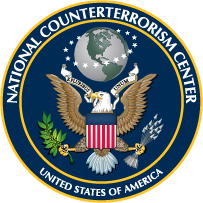National Counterterrorism Center
"The center provides a unique environment to optimize the U.S. government's collective knowledge and formidable capabilities to identify and counter the terrorist threat to the nation."
NCTC comprises employees from partner organizations that include: Central Intelligence Agency; Department of Justice/Federal Bureau of Investigation; Departments of State, Defense, and Homeland Security; and other entities that provide unique expertise such as the Departments of Energy, Treasury, Agriculture, Transportation, and Health and Human Services; Nuclear Regulatory Commission; and the U.S. Capitol Police.
The NCTC also maintains productive relationships with foreign partners. It is the diversity of backgrounds and disciplines fused together in an integrated environment that enriches the NCTC analysis, provides alternative perspectives, and breaks down cultural and physical barriers.
Bomb Threat Stand-Off Distance Chart
Threat descriptions, explosive capacities, building evacuation distances, and outdoor evacuation distances.
Intelligence Guide For First Responders
This Interagency Threat Assessment and Coordination Group (ITACG) Intelligence Guide for First Responders is designed to assist state, local, tribal law enforcement, firefighting, homeland security, and appropriate private sector personnel in accessing and understanding Federal counterterrorism, homeland security, and weapons of mass destruction intelligence reporting.
Daily Threat Reporting
A daily accounting of threat reporting and actions taken.
bulletAnalytic Assessments
Daily analytic products for senior USG officials and the broader CT Community on the full range of terrorist topics. Analysis also provides alternative views on terrorism issues.
Situational Awareness Reports
Situational awareness reports of terrorist threats, incidents, and reported plots worldwide.
Alerts, Advisories, and Warnings
Topics of interest that are widely disseminated to domestic and overseas operators and analysts.
Strategic Operational Plans
Integrated and synchronized across U.S. government agencies, describing specific objectives, department / agency roles and responsibilities, tasks, and activities for counterterrorism.
Goals and Objectives
Quote Box top
Shield Icon
Protect the homeland and US interests around the world
Integrate across agencies
Motivated and prepared workforce
Quote Box bottom
Leadership
"Fulfill our leadership role in the counterterrorism community"
1.1 Enhance strategic, tactical, and identities analysis using our access to foreign and domestic threat information and integrated data sets.
1.2 Strengthen the National Intelligence Manager— Counterterrorism role.
1.3 Advance government-wide counterterrorism planning, integration, coordination, and management.
Partnership
"Ensure our domestic and foreign partners have access to terrorism information and analysis when they need it."
2.1 Strengthen NCTC’s relationship with federal partners.
2.2 Enhance NCTC’s foreign government counterterrorism.
People
"Attract, develop, and reward a highly skilled workforce."
3.1 Attract a highly qualified, diverse workforce with an array of backgrounds, skills, and experiences, leveraging expertise from across the intelligence community and the US Government.
3.2 Increase training and professional development opportunities to expand and deepen the expertise of the NCTC workforce.
3.3 Ensure personnel are recognized, rewarded, and given access to the developmental resources they need to succeed.
Process
"Advance business practices to improve NCTC’s culture of collaboration, communication, and integrity."
4.1 Advance collaboration and integration across NCTC Directorates and Offices.
4.2 Improve processes to strengthen products and services to meet customer needs.
4.3 Enhance NCTC’s acquisition, sharing, and safeguarding of data in compliance with laws and policies designed to protect sensitive data.
4.4 Provide clear, consistent, and timely communications throughout NCTC.
Technology
"Enhance the use of information technology resources to strengthen NCTC’s core capabilities."
5.1 Deliver integrated information technology solutions that enable analytic production, seamless collaboration, and secure counterterrorism information sharing.
5.2 Implement and sustain a standards-based counterterrorism architecture and survivable infrastructure to drive efficiencies across the enterprise.
5.3 Define and implement transparent governance, acquisition management, and resource optimization processes to support evolving mission requirements.
NCTC Landing Page
NCTC leads the way for the USG in terms of analyzing, understanding, and responding to the terrorist threat. That mission imperative informs and animates everything we do. Highlights of what we do include:
• Operate as a partnership of organizations to include: Central Intelligence Agency; Department of Justice/Federal Bureau of Investigation; Departments of State, Defense, and Homeland Security; and other entities that provide unique expertise such as the Departments of Energy, Treasury, Agriculture, Transportation, and Health and Human Services; and the Nuclear Regulatory Commission.
• Chair interagency meetings on terrorist groups, capabilities, plans and intentions, and emerging threats to U.S. interests at home and abroad.
• Chair and/or support interagency groups orchestrating and facilitating an efficient and effective allocation of U.S. government terrorism analysis assets, to include appropriate, planned redundancy.
• Produce integrated and interagency-coordinated analytic assessments on terrorism issues and publishes warnings, alerts, and advisories as appropriate.
• Maintain the national repository of known and suspected terrorists.
 • Manage a Joint Operations Center to provide unique insight and situational awareness of developing terrorism-related worldwide issues and events.
• Manage a Joint Operations Center to provide unique insight and situational awareness of developing terrorism-related worldwide issues and events.
• Operate a secure website, NCTC CURRENT, which serves as an important dissemination mechanism for terrorism information produced by NCTC and other counterterrorism mission partners. NCTC CURRENT is directly available to a broad audience to include U.S. government partners with an operational focus such as the FBI's Joint Terrorism Task Forces and DOD's combatant commands.
• Support a process led by the Executive Office of the President to improve terrorism information sharing within the Intelligence Community and with the rest of the federal government and beyond.
• Provide an interagency forum and supporting process to link national-level counterterrorism policy to strategic operational objectives and tasks for counterterrorism.
• Develop, integrate, implement, and measure the effectiveness and progress of strategic operational plans for U.S. counterterrorism activity.
• Assign roles and responsibilities to lead Departments or agencies for counterterrorism activities according to strategic operational plans and consistent with applicable laws.
 In the aftermath of September 11, 2001, President George W. Bush, by issuing Executive Order 13354, and the Congress of the United States (US), by passing the Intelligence Reform and Terrorism Prevention Act (IRTPA) of 2004, reformed our nation’s intelligence enterprise, with a specific focus on intelligence related to terrorism. These foundational documents define NCTC’s principal roles, missions, and responsibilities.
In the aftermath of September 11, 2001, President George W. Bush, by issuing Executive Order 13354, and the Congress of the United States (US), by passing the Intelligence Reform and Terrorism Prevention Act (IRTPA) of 2004, reformed our nation’s intelligence enterprise, with a specific focus on intelligence related to terrorism. These foundational documents define NCTC’s principal roles, missions, and responsibilities.
Mission
Lead the nation’s effort to protect the United States from terrorism by integrating, analyzing, and sharing information to drive whole-of-government action and achieve our national CT objectives.
Vision
Be the nation’s indispensable source of CT expertise in a constantly evolving threat environment by leading a unified, agile, and resilient CT enterprise.
Values
Excellence, Integrity, Diversity, Leadership, Partnerships




